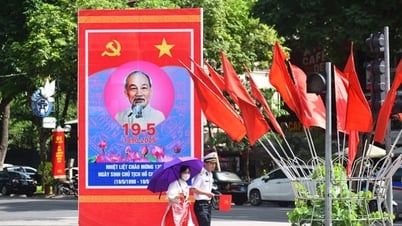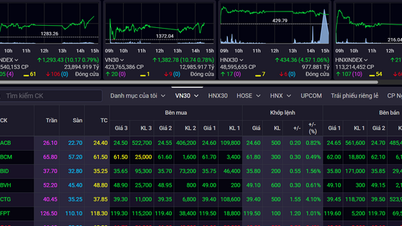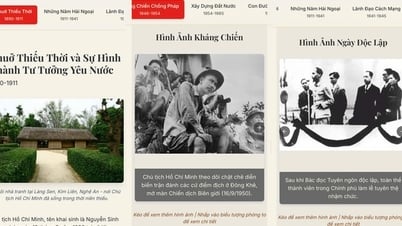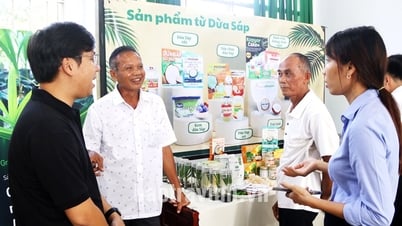However, the city's silk industry is facing a significant challenge, such as shortages and dependence on input materials. Being proactive in the source of silk materials not only has economic significance, but is also a key factor in preserving the cultural identity of craft villages and enhancing the value of Hanoi OCOP products.

Cannot proactively source raw materials
In the flow of the One Commune One Product Program, Hanoi 's traditional silk weaving industry is striving to affirm its position, not only in the domestic market but also internationally. Silk weaving is an industry that requires sophistication and consistent quality, from raw materials to finished products. In which, silk is the "soul" of the profession, largely determining the quality of silk. However, currently, most silk weaving establishments in Hanoi have not yet proactively sourced raw materials in a stable manner and at competitive prices.
Vice President of the Van Phuc Silk Weaving Village Association (Ha Dong) Tran Thi Ngoc Lan shared that on average, the village produces about 100,000m of various types of silk each year, including about 39,000m of mulberry silk and 61,000m of shiny silk. Revenue from the village is about 16.7 billion VND. To meet the production needs of the village, Van Phuc needs about 10.8 tons of silk each year.
“In the past, Van Phuc people still grew mulberry and raised silkworms, but now, due to urbanization, the source of raw materials depends entirely on imports from other localities, such as Ha Nam , Lam Dong, Quang Nam... Domestic silk sources are increasingly scarce, expensive and uneven in color, so there are times when establishments are forced to use imported silk, affecting product quality and reducing the tradition of Hanoi silk,” said Ms. Tran Thi Ngoc Lan.
According to the Hanoi New Rural Development Program Coordination Office, the current demand for stable raw material sources for Hanoi's craft villages is about 50,000 tons/year of silk for weaving, embroidery, etc. If the source of raw materials is proactive, it will help production facilities ensure quality - a vital factor for OCOP products when entering the big playground. Moreover, self-sufficiency in raw materials helps reduce product costs, increase competitiveness in the market, especially in the context of traditional handicrafts trying to penetrate deeply into e-commerce channels, supermarkets, and exports. This is also an inevitable step for OCOP products to reach 4-star standards or higher, meeting strict regulations on origin and traceability.
Find a way to untie the "knot"
Developing OCOP products in Hanoi's silk industry cannot be separated from the initiative in raw materials. This is both an urgent requirement and a long-term significance in the process of preserving and promoting the value of traditional craft villages in the capital. Proactive raw materials not only help control quality and reduce dependence, but also create a closed value chain, harmoniously connecting tradition and modernity. This is also a necessary condition for Hanoi's OCOP silk products to upgrade their star rating and confidently, systematically and effectively approach the international market.
To remove the raw material bottleneck, Director of My Duc Mulberry and Silk Company (Phung Xa Commune, My Duc District) Phan Thi Thuan said that the unit still maintains the mulberry growing and silkworm raising area in the Day coastal area. In addition to directly growing mulberry and raising silkworms, the company also links the chain between mulberry growers - silkworm raising facilities - weaving households, contributing to stabilizing output, creating trust for farmers to stay long-term. Currently, the company has many products certified by OCOP, including "Self-woven silk blankets" meeting 5-star standards.
To overcome difficulties in developing OCOP products from the weaving industry, recently, the Hanoi Department of Agriculture and Environment and representatives of the Van Phuc Craft Village Association worked with Lam Dong province to discuss the linkage of organizing the production chain and consumption of agricultural products in general, and silk products in particular. At the meeting, Hanoi craft village enterprises registered their demand for Lam Dong silk consumption according to product quality standards from the technical production process to harvesting. Currently, Lam Dong province has the largest mulberry growing area in the country with about 700 hectares, the area converted to new high-yield mulberry varieties is about 300 hectares, with an average yield of 22-23 tons/ha. The whole province has more than 150 cocoon purchasing facilities and 36 silkworm breeding facilities.
In 2025, the Hanoi Department of Agriculture and Environment will continue to organize many trade promotion activities in the silk sector on a national and international scale, creating more opportunities for Lam Dong and Hanoi enterprises to connect and trade, expand production chains, and consume stably and long-term. In the orientation of rural economic development associated with the OCOP Program, investing in silk raw material areas is investing in the future of an industry with hundreds of years of tradition. From today's initiative, Hanoi OCOP silk products will increasingly affirm their position, be the pride of the capital, and contribute to spreading the Vietnamese cultural brand to the world.
Source: https://hanoimoi.vn/giai-bai-toan-nguyen-lieu-cho-phat-trien-san-pham-ocop-lua-702629.html





![[Photo] General Secretary To Lam visits exhibition of achievements in private economic development](https://vphoto.vietnam.vn/thumb/1200x675/vietnam/resource/IMAGE/2025/5/18/1809dc545f214a86911fe2d2d0fde2e8)
![[Photo] National conference to disseminate and implement Resolution No. 66-NQ/TW and Resolution No. 68-NQ/TW of the Politburo](https://vphoto.vietnam.vn/thumb/1200x675/vietnam/resource/IMAGE/2025/5/18/adf666b9303a4213998b395b05234b6a)
![[Photo] More than 17,000 candidates participate in the 2025 SPT Competency Assessment Test of Hanoi National University of Education](https://vphoto.vietnam.vn/thumb/1200x675/vietnam/resource/IMAGE/2025/5/17/e538d9a1636c407cbb211b314e6303fd)

















![[Photo] Prime Minister Pham Minh Chinh chairs meeting on science and technology development](https://vphoto.vietnam.vn/thumb/1200x675/vietnam/resource/IMAGE/2025/5/17/ae80dd74c384439789b12013c738a045)
































































Comment (0)